Leucaena leucocephala (Lead tree)
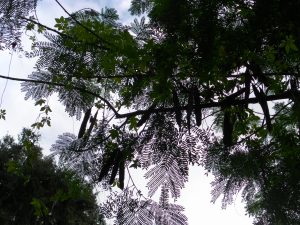
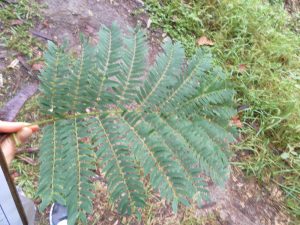
Photo by J. Baniszewski
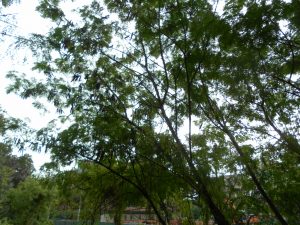
Leucaena leucocephala is a member of the Fabaceae family and currently is on Florida’s Category II list of invasive species and is considered a noxious weed in Florida (MacDonald et al. 2008, Wunderlin and Hansen 2008). The lead tree is native to Mexico and Central American. and was introduced to Florida in 1898 (MacDonald et al. 2008). L. leucocephala was likely introduced for its use of fodder for cattle or for erosion control. Its wood has also been used for lumber and fuel and the tree was commonly planted as an ornamental to provide shade, control soil erosion or windbreaks (MacDonald et al. 2008).
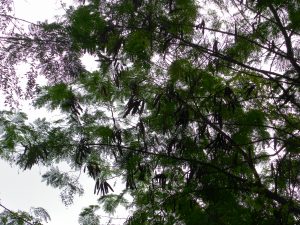
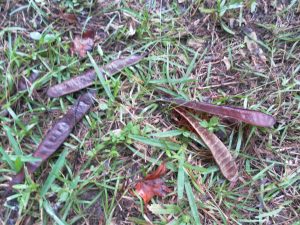
Photo by J. Baniszewski
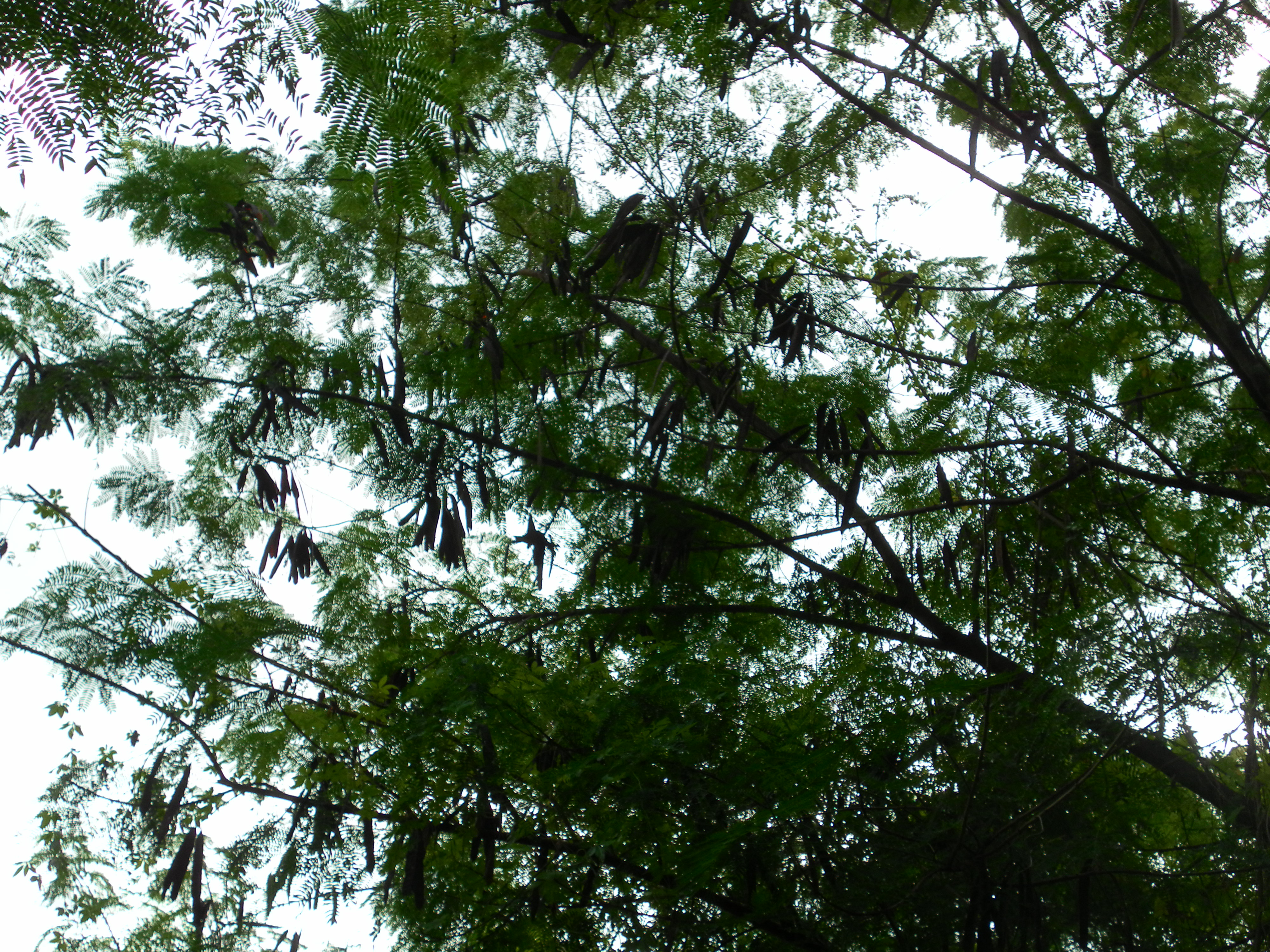
Photo by J. Baniszewski
The lead tree is commonly found as shrub or small tree in many communities such as disturbed or cleared areas, coastal or forests communities (MacDonald et al. 2008). Soil acidity (up to pH of 4.1) can be tolerated as well as full sun. It is salt tolerant as well as drought tolerant due to its large roots. Lead tree is known to be able to grow in soils with low fertility, clays, sand, silt and limestone (Langeland et al. 2008). L. leucocephala is fast growing and has high photosynthetic rates thus allowing it to produce a large biomass which can form dense thickets quickly. It may grow up to 30 tons of dry matter per hectare per year. Additionally, surface roots invade the soil and increase competition for other plants (Langeland et al. 2008). It is typically 12-16 feet tall, but can grow to 33 feet and shade native vegetation (MacDonald et al. 2008, Langeland et al. 2008).
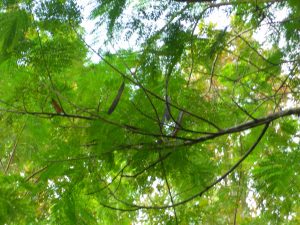
Photo by J. Baniszewski
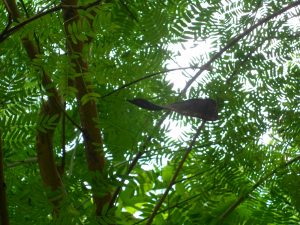
Photo by J. Baniszewski
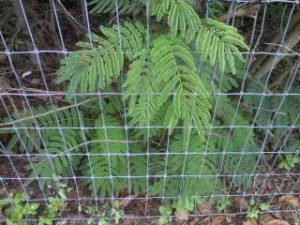
Photo by J. Baniszewski
Leaves are ten inches long, bipinnate and are often found with 12 or more pairs of leaflets (MacDonald et al. 2008, Langeland et al. 2008). Leaflets are opposite and about nine millimeters long and three millimeters wide (MacDonald et al. 2008). They are asymmetric, glbabrous, gray-green colored with offset midveins, a pointed tip and rounded base (Langeland et al. 2008) Flowers contain 10 stamens and are located on branch ends in clusters and turn from white or yellow to brown as they mature (MacDonald et al. 2008, Langeland et al. 2008). There may be 12 – 20 seeds in each pod, which are brown and may range from four to six inches long (MacDonald et al. 2008, Langeland et al. 2008). The actual seeds are also brown, oval, flat, glossy and only a few millimeters long (MacDonald et al. 2008). Seeds are typically dispersed via birds, rodents, and cattle and often germinate after a fire, but are viable for over 10 years (MacDonald et al. 2008, Langeland et al. 2008). The key difference lead tree has from native Florida legumes are the flattened pods and white flower heads. Frosts and fire kill exposed vegetation, but lead tree is able to resprout after a fire (Langeland et al. 2008).
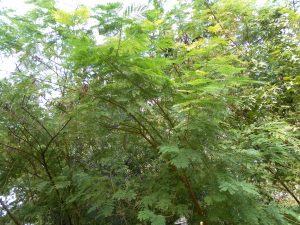
Photo by J. Baniszewski
Management strategies for Leucaena leucocephala are primarily by preventative and cultural strategies. However, biological and chemical means may help to some extent to control this species. Preventative and cultural methods include removing established trees if possible. Removal is recommended before seeds production (MacDonald et al. 2008). Although they do not kill the tree, leucaena psyllid (Heteropsyllacubana), the “jumping lice” can damage lead tree and goats will eat the invasive plant and act as a control agent as well. Triclopyr is a recommended if trying a chemical method of control (MacDonald et al. 2008).
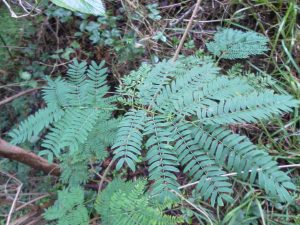
Photo by J. Baniszewski
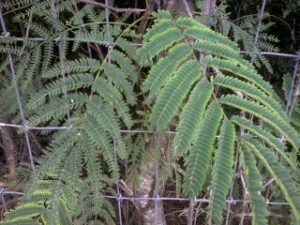
Photo by J. Baniszewski
Links:
http://plants.ifas.ufl.edu/node/224
http://www.florida.plantatlas.usf.edu/Plant.aspx?id=1397